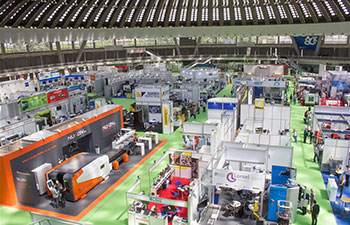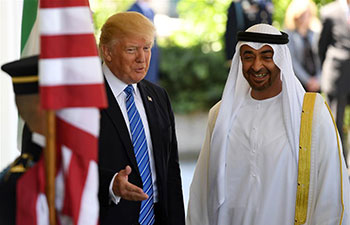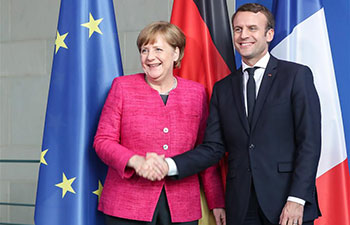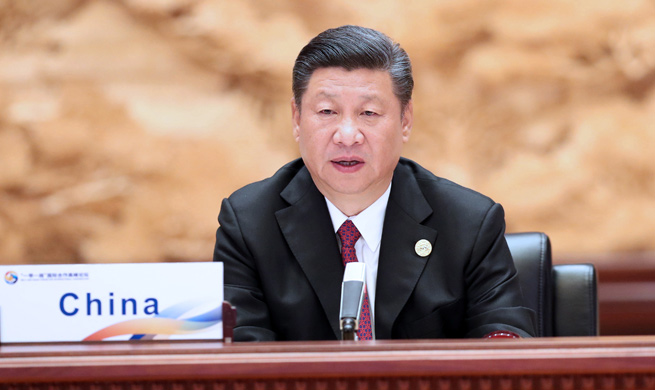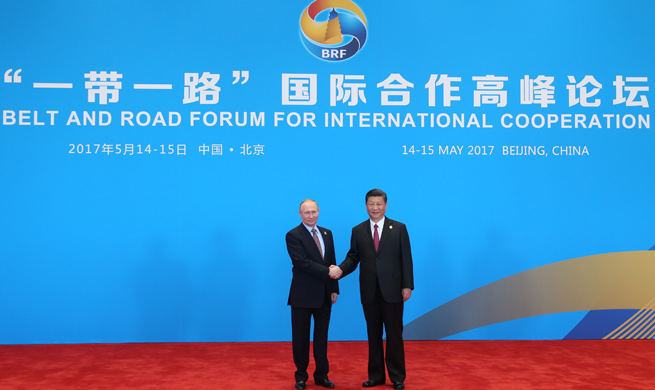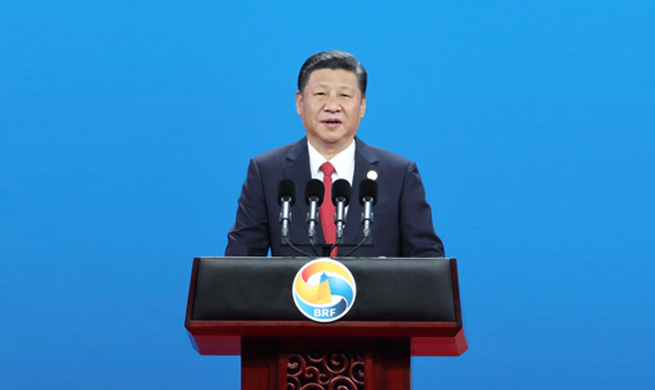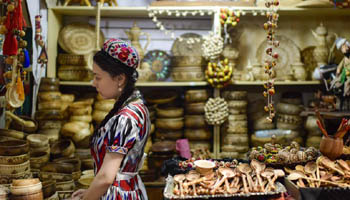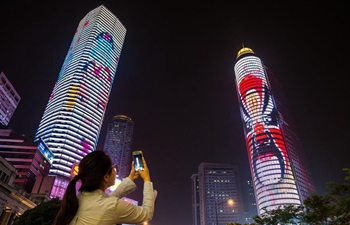BEIJING, May 15 (Xinhua) -- When an Arab dhow carrying gold and tens of thousands of pieces of porcelain sank en route from Africa to China off the coast of Indonesia nearly 1,200 years ago, it did not vanish from history.
It has resurfaced to enlighten Chinese leadership in their endeavors to revive the glory of ancient silk routes.
Chinese President Xi Jinping spoke of the sunken vessel, known as the Belitung shipwreck, as a witness to "this exciting period of history", addressing the Belt and Road Forum for International Cooperation on Sunday.
In Xi's description, bustling trade by land and sea was an everyday scene along the ancient silk routes, but the benefits were far beyond trade. "More importantly, the exchange of goods and know-how spurred new ideas," said Xi, but how far-reaching can the influence be?
Perhaps nothing is more convincing than the blue-and-white ware salvaged from the Belitung shipwreck, the only surviving examples of its kind from Tang Dynasty (618-907).
For many, delicate white porcelain with blue patterns, known in Chinese as qinghuaci, epitomizes the Chinese style, but it is actually a case of cross fertilization. The cobalt blue pigment used was imported from Persia.
James A. Millward points out in his book "The Silk Road" that the blue-and-white china we know today was produced in the Yuan (1279-1368) and subsequent Ming (1368-1644) dynasties, due to increasing imports of Persian cobalt and breakthroughs in ceramic technology.
The porcelain, once valued highly in the Islamic courts of central, south and southwest Asia, was frequently imitated along the Silk Road. For example, from the 15th century, potters in Iznik, western Anatolia in today's Turkey, made their own version of Chinese blue-and-white. Local craftsmen developed their own floral patterns, such as tulips, and even extended the decoration to the interiors of their mosques.
Later, China's porcelain exports to Europe thrived, as an exhibition on the maritime Silk Road currently in the Forbidden City has demonstrated.
A blue-and-white soup container in the shape of lotus leaf stands out in the exhibition as the epitome of the porcelain trade with Europe during Ming and Qing (1644-1912) Dynasties. "Having the same style as Kraak ware, it was made according to designs brought from Europe," said Zheng Hong, the exhibition curator.
Kraak porcelain, perhaps named for the Portuguese ships (carracks) which carried it to Europe, was among the first Chinese mass exports to arrive in Europe and was a common subject of European still life paintings featuring luxurious goods from distant lands.
"The trade and exchange along the ancient Silk Road left us many masterpieces that blended Eastern and Western art," Zheng said.
"History is our best teacher," Xi said. Under the Belt and Road Initiative, China is now striving to rebuild the connectivity along the ancient routes, hoping to find solutions to the threats facing the world.
Global economic recovery has been hard and tortuous. International trade and investment are slow, and globalization has met setbacks.
"Some regions along the ancient Silk Road used to be lands of milk and honey. Yet today, these places are often associated with conflict, turbulence, crisis and challenges. Such a state of affairs should not be allowed to continue." Xi said.
Wang Yiwei, a professor at the School of International Relations at Renmin University of China, believes the Belt and Road Initiative will strike a chord among countries along the ancient routes, including those now plagued by poverty and wars, and help them gain confidence and drive force in regional cooperation.
Farhdin, a tour guide with Sheikh Safi al-din Khanegah and Shrine Ensemble in Ardabil, a northern city in Iran, hoped that in the future, more foreign tourists, especially Chinese, would come to visit the gorgeous blue-and-white chinaware collected by the shrine.
"These were gifts from China, showing that the two countries have been good friends since long ago," Farhdin said.
Sheikh Safi al-din Khanegah and Shrine Ensemble, listed as a world heritage site by UNESCO, had an original collection of more than 400 pieces of blue-and-white, some of which are no longer on display after being transferred to the national museum in Tehran.
In ancient times, Iran set up courier stations and military posts along the Silk Road to ensure the security of passing caravans, and made great fortunes by serving as a middleman in trade, according to Sadeq Zibakalam, a professor with Tehran University.
Now Iran is eager to strengthen cooperation with the Belt and Road countries to get itself out of economic difficulties, Zibakalam said.
In addition to economic benefits, he believes the initiative will also bring the people more cultural treasures, as did Chinese blue-and-white in ancient times.






